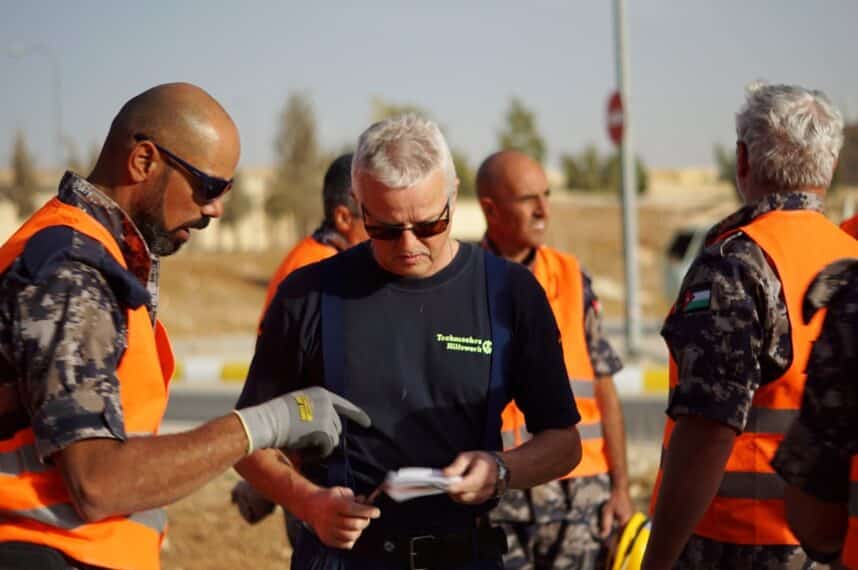Today, the workforce has become a vibrant tapestry of cultural and linguistic diversity. Industries of all kinds—from manufacturing to healthcare—are witnessing a growing influx of employees from varied backgrounds.
However, this shift presents unique challenges, particularly when it comes to safety training. Language barriers can obstruct the clarity and efficacy of critical safety protocols, making comprehensive training not just an organizational hurdle, but a vital initiative.
It’s no small feat to navigate the complexities of multilingual communication. It requires an understanding of cultural nuances, as well as the flexibility to adapt safety training to accommodate different linguistic needs. Miscommunication in high-stakes scenarios can be dire, including an increased risk of accidents and legal repercussions. This highlights the need for an inclusive approach to safety instruction—one that respects the linguistic capabilities of all employees.
Besides the fact that multilingual safety training is a requirement in many industries, it is also the foundation of a truly safe, productive, and inclusive workplace. By embracing multilingualism in safety training, organizations comply with regulatory standards and foster an environment where every employee has the knowledge and confidence to act safely.
The Diverse Working Landscape
The linguistic landscape of the workplace continues to expand. Recent trends point towards a significant presence of multilingual employees in the workforce. For example, the US Department of Labor notes that in 2020, there were 29 million Hispanics and Latinos in the US labor force, and by 2030 that number will increase to an estimated 35.9 million. The US Census Bureau estimates that 24% of the US population ages 18-64 speak a language other than English at home, which can indicate a potential reflection of this diversity in the workplace.
This linguistic variation is especially pronounced in industries such as healthcare, construction, and hospitality, which often employ a large number of bilingual or multilingual workers. In healthcare, for instance, clear communication is paramount, with patients’ well-being and safety at stake. Construction sites buzz with a blend of languages, where any misinterpretation of instructions can lead to critical safety mishaps. The hospitality sector, which aims to cater to a diverse clientele, may naturally gravitate towards a multilingual staff to provide service that feels both personal and attentive.
Through this lens, we gain a clearer picture of the diverse workplace landscape and the challenges that come with it. This brings to the forefront the critical need for multilingual safety training—all employees should have equal access to understand and implement safety procedures effectively.

The Risks of Monolingual Safety Training
Relying solely on monolingual safety training is a recipe for miscommunication and, consequently, disaster. The hazards of this one-language approach are numerous and potentially severe.
When safety instructions are lost in translation, the result can be more than just confusion—it can lead to injuries, or in the worst cases, fatalities. For example, a worker might misunderstand the specifics of handling hazardous materials or the correct usage of machinery, turning a routine task into a perilous one.
Beyond the immediate physical dangers, there are substantial legal and ethical implications to consider. Regulations often mandate that safety training be provided in a language and vocabulary that employees can understand. Failure to comply not only exposes businesses to hefty fines and legal action but also betrays a basic ethical responsibility towards employees to provide a safe working environment.
The provision of monolingual training in a multilingual workforce can inadvertently signal a lack of consideration for the diverse needs of employees, which can have a lasting impact on workplace dynamics. It can erode the trust between employees and management, leading to a feeling of exclusion among non-native speakers. This can have a domino effect, impairing team cohesion, employee engagement, and overall morale. Workers who feel undervalued or misunderstood are less likely to feel a sense of loyalty to their employer, potentially increasing turnover rates and decreasing productivity.
Moreover, when employees are not confident in their understanding of safety protocols, they may be hesitant to report potential hazards or incidents, creating an undercurrent of vulnerability that could ripple throughout the entire organization. In essence, monolingual safety training creates an environment ripe for miscommunication, mistrust, and missed opportunities to build a culture that prioritizes the well-being of every employee.
The Takeaway
We urge businesses to take a critical look at their current safety training programs. In an era where the workforce is more linguistically diverse than ever before, can you afford not to adopt a multilingual approach?
Multilingual safety training is essential for any business with a rich and diverse employee base. Its benefits contribute to a culture of safety, inclusivity, respect, and shared responsibility for the well-being of all employees.
If you’re ready to take action towards creating a safer and more inclusive workplace, visit Babbel for Business today and schedule a demo.




